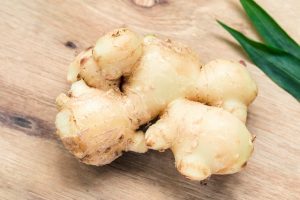Chili peppers are native to the Americas, and their colors range from green to red. Chili powder is made of ground dried chilies and may be combined with other spices, including cumin, garlic powder, oregano, and salt.
Chili powder is used in many dishes, but most famously in chili con carne (one of the “Four C’s” of Tex-Mex cuisine). Chili powders can vary in heat and intensity, so try a little before adding it to your dish.
On our website you can find numerous articles about how to make chili powder from scratch. We also offer a list of recommended places where you can buy chili peppers and chili products online.
Chili peppers are cultivated in many countries, with China, Turkey and Mexico being the largest producers. The chilies used in Thai cooking are also grown domestically. The varieties of chili peppers available in your local market or grocery store can be categorized as follows:
Sweet peppers. Bell peppers (also called capsicums) are the large vegetables with a full shape that are typically green, but may also be red, yellow or purple. They have a thick fleshy wall without much heat and contain many seeds. These can be sliced into salads or sauteed for use as a vegetable side dish. Sweet peppers are indispensable for Mexican and Italian dishes.
Hot peppers. Jalapenos and Anaheims are usually dark green and are about 2 to 3 inches long. They have a bright flavor and moderate heat, which makes them a good choice for most dishes requiring chilies. Jalapenos are frequently pickled and served on nachos and other Mexican dishes, while Anaheims (chiles rellenos) make great stuffing peppers for Mexican dishes. Serranos are similar to jalapenos but smaller and hotter, with a more intense flavor; they are great for salsa and other Mexican dishes requiring hot chilies.
Dried Chilies. Dry (or cured
Before the 16th century, there were no chili peppers in India. The Spanish and Portuguese introduced them to the subcontinent during their colonization of the Americas. In fact, much of what is now considered Indian cuisine is actually just Indian ingredients cooked the way the Portuguese and Spaniards did in their home countries.
Chili peppers first came to Asia in 1542, when Portuguese traders took them from Brazil to Japan. From there they spread to “Malaya,” a term referring to the Indonesian archipelago. By the early 1600s they were growing in India and China. The British brought them back home from India, where they are still used as a substitute for black pepper, which was expensive at that time.
Chili peppers are native to Central and South America. There are many different species of chili pepper, but they all belong to the same genus: Capsicum annuum. The most common variety of “chili pepper” (Capsicum annuum) has red fruit but there are also varieties with orange, yellow, green or purple fruit.
During the Columbian Exchange in 1492, Christopher Columbus discovered chili peppers growing on a Caribbean island he named Hispaniola (now known as Haiti). He brought some seeds back with him and planted them in Spain
Chili peppers (Capsicum annuum) are the fruit of a plant in the nightshade family. They belong to the same family as bell peppers and tomatoes, but they are more closely related to bell peppers than they are to tomatoes. There are many different kinds of chili peppers. Some are small, some are large, and some can be extremely spicy hot!
Chili peppers originated in the Americas. One of their wild ancestors was thought to have originated in Brazil, although this is now under debate. The oldest archaeological evidence of chili peppers comes from sites in Ecuador and Peru, dating back thousands of years ago.
The chili pepper was spread by Christopher Columbus on his voyage back to Europe. This spice was so popular that it spread quickly throughout Europe and Asia. The Spanish brought it to the Philippines where it is widely grown today, but they never took it back to their own country, as paprika was already widely used there.
Chili peppers have been cultivated for thousands of years. Early cultivators took advantage of their popularity among humans by selecting for larger fruits with thicker walls that were easier to harvest and process into dried powders or pastes for use in food preparation or as medicines.
Chili powder is made from the ground-up dried fruit
What is a chili pepper?
A chili pepper, sometimes called a chile or chilli, is the fruit of the plant Capsicum. It contains a chemical compound known as capsaicin that produces a burning sensation in your mouth when you eat it. Chile peppers have been used since ancient times to add spice to food as well as for medicinal purposes. The word chili comes from the Nahuatl word “chilacatl” which means red pepper and comes from the Aztec culture.
Chile peppers are native to South America, where they were cultivated by the Aztecs and other early civilizations. From South America, they spread to Europe through Spain, Portugal and eventually into Africa and Asia. Christopher Columbus found them in the Caribbean Islands on his second voyage to the New World in 1493. He brought them back with him on his return trip to Europe where he thought that they were varieties of black pepper. This is how they became known as peppers, even though they are not related to black pepper at all. The name chile was adopted by many countries including the United States of America during the 19th century when it was imported from Mexico where it has been used for centuries. This explains why some people call them chili peppers while others refer to them as
The chili pepper is one of the most widely used spices in the world and has been for thousands of years. It is native to Mexico, Central America, and northern South America, although people have successfully grown them in other parts of the world. They are part of the nightshade family, which includes tomatoes, potatoes, eggplant and tobacco. They are related to bell peppers, but are much spicier.
There are many different kinds of chili peppers. Peppers range from sweet bell peppers with no heat to fiery habaneros that can make your face burn! Many people enjoy eating them raw or cooked in various dishes.
For those who like spicy food, it seems that the hotter the better! Even though a chili pepper may be very hot, it doesn’t change its nutritional value. In fact, a fresh jalapeno has more vitamin C than an orange!
Chili peppers (Capsicum) have been eaten for thousands of years. The first record of them was in 1493 when Christopher Columbus saw them in the Caribbean. He thought they were an exotic form of peppercorn and called them peppers, even though they are not related to the Piper nigrum from which black pepper is derived. The peppers were also more valuable than gold at that time.
The chili pepper has a long history throughout America. The first written record of it in Mexico dates from 1518, and shows that it was in common use. Chile peppers were cultivated around what is now Mexico City by at least 500 BC, and there are references to their medicinal uses by the Aztecs. There are records of the Spanish bringing chili seeds back to Europe as early as 1523, but widespread cultivation did not begin until the late 1500s or early 1600s when they were introduced to Asia via Portuguese traders based in Goa, India.
For centuries, chile peppers were used solely as a spice or condiment. Their culinary impact was immense because they made otherwise bland foods taste better without adding calories from fat or carbohydrates; and because they increased salivation, which helped people eat more food and get more nutrients from it.

